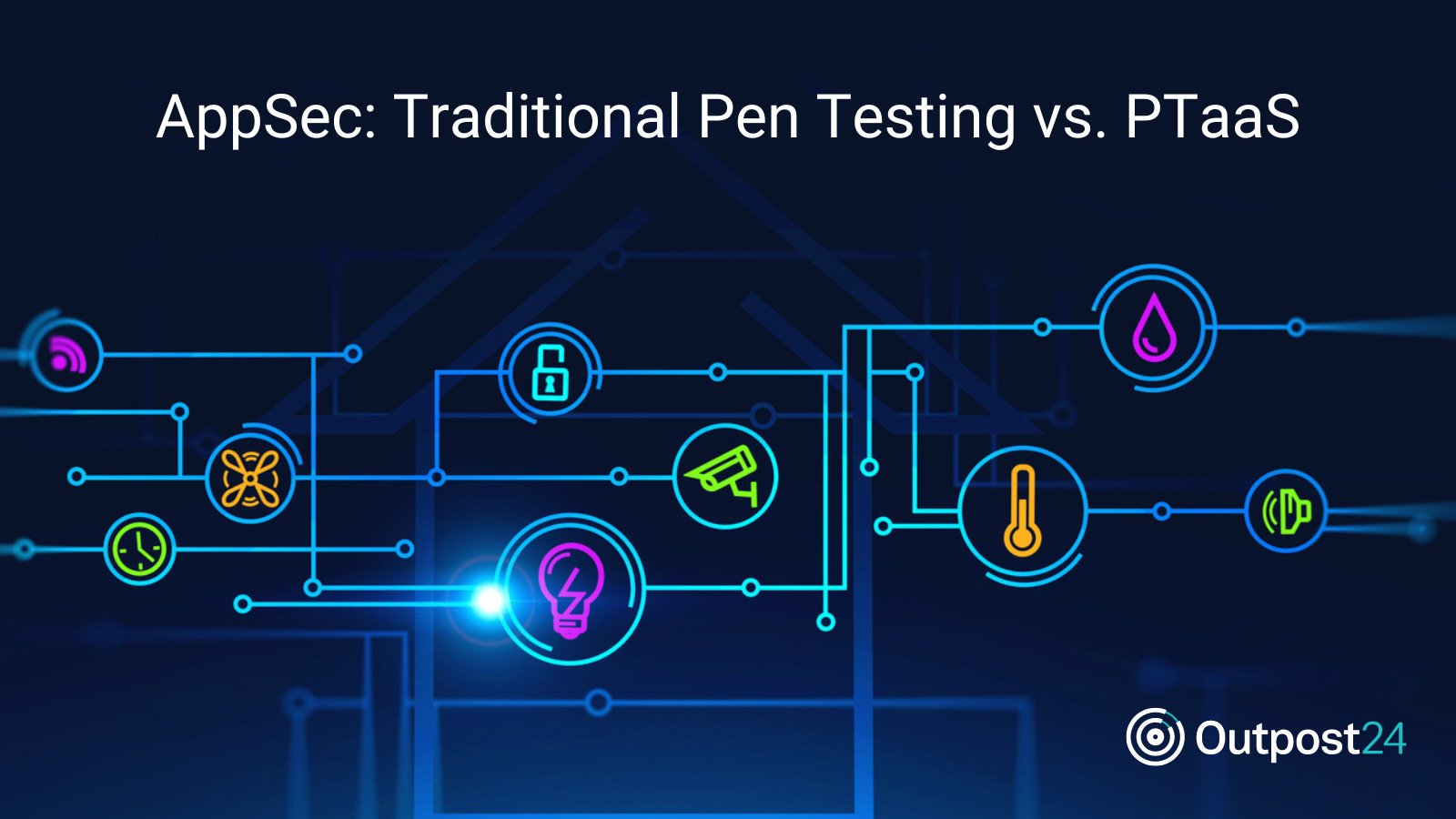
While traditional penetration testing (pen testing) has long been the go-to method for identifying security gaps in a organization’s network and web application, a new approach has emerged: penetration testing as a service (PTaaS).
With evolving cyberthreats in the digital landscape, organizations search for effective ways to secure their web applications. PTaaS combines the thoroughness of traditional pen testing with the continuous vigilance of scanners offering a new perspective on security testing.
But is this just a new coat of paint on an old practice or a legitimate, innovative option for companies seeking stronger security?
This article delves into the heart of PTaaS, uncovering its distinctive features and advantages over traditional pen testing. We examine the integral role of scanners in PTaaS, illuminating how they complement human-led testing by catching anomalies that might slip past the human eye.
The Differences Between Pen Testing and Pen Testing as a Service
Penetration testing, or pen testing, is a traditional method of identifying vulnerabilities in a system. It typically involves a team of cybersecurity experts simulating cyberattacks on a company’s network or application to uncover potential security gaps.
Once the process is complete, the team provides a detailed report outlining the identified weaknesses and suggesting ways to mitigate them.
However, this approach to pen testing is, by nature, a point-in-time exercise. It provides a snapshot of the application’s security status at the moment of the test but does not account for any new vulnerabilities that might emerge after the test.
As a result, the time between pen tests can leave organizations vulnerable to threats. This is where penetration testing as a service, or PTaaS, comes in.
PTaaS revolutionizes the traditional pen testing model by introducing a continuous approach to web application security testing. Instead of a one-off examination, PTaaS offers ongoing, real-time testing that combines the benefits of manual pen tests with automated scanning tools.
Continuous Approach
The most distinguishing feature of PTaaS is its continuous approach to security testing. In contrast to traditional pen testing, which offers a one-time view of vulnerabilities, PTaaS provides ongoing monitoring and testing of web applications.
This strategy ensures that new vulnerabilities are detected and addressed promptly, reducing the window of opportunity for potential cyberattacks.
Combination of Manual Pen Tests and Scanners
PTaaS leverages both human expertise and machine efficiency by integrating regular pen tests with automated scanners. While manual pen tests carry out in-depth testing and can simulate sophisticated attacks, automated scanners offer continuous scanning capabilities.
These scanners can quickly go through vast amounts of data and identify issues that might be missed by human testers, such as minor configuration errors. They can also promptly identify common vulnerabilities and exposures (CVEs) as they emerge.
This combination of manual and automated testing allows for a more thorough and continuous security assessment. It ensures that vulnerabilities are not just identified during scheduled pen tests but are also continuously detected and addressed as they arise.
The Symbiotic Relationship Between Humans and Automated Scanners
Automated scanners are renowned for their proficiency in swiftly identifying common vulnerabilities. Their capabilities include pinpointing issues like outdated software, incorrect configurations, and known vulnerabilities, achieving speed and scale that is humanly unattainable.
In contrast, the unique value of human pen testers lies in their capacity for creative thinking, complex vulnerability exploitation, and understanding the intricate business context. They are skilled at crafting unique attack vectors, simulating social engineering attacks, and detecting business logic flaws — issues that automated scanners might miss.
PTaaS optimally leverages the power of both, offering a comprehensive and potent cybersecurity solution.
The Industry Perception of PTaaS
Industry opinions on PTaaS are varied and reflect a broad spectrum of experiences and expectations.
In digital communities where cybersecurity professionals gather to share insights, like Reddit and StackExchange, PTaaS is a topic of ongoing discussion. Some industry professionals view PTaaS as a dynamic solution that combines the benefits of automated testing with human expertise, providing a more continuous and adaptive approach to security testing.
However, concerns are also raised within these discussions. For instance, some express skepticism regarding the ability of PTaaS to match the depth of traditional penetration testing conducted by experienced professionals. Others worry about the reliance on automation, the possibility of false positives, and the potential for overlooking vulnerabilities that a human tester might spot.
Despite these concerns, there is a recognition of the benefits that PTaaS can bring to the table. These include the continuous monitoring of systems, the ability to identify and respond to vulnerabilities rapidly, and the combination of human-led testing and automated scanning for a more comprehensive security assessment.
The industry discussions highlight a key point: the digital landscape is evolving rapidly, and cybersecurity strategies need to evolve in tandem. In this context, PTaaS emerges as a legitimate and progressive option. It’s not merely traditional penetration testing repackaged but an enhancement that leverages the best of both automated and human-led testing.
Making the Case: a Unique Approach to PTaaS
Outpost24, a leading provider in the cybersecurity space, has developed a unique approach to penetration testing as a service (PTaaS) that sets it apart from other service providers. Recognizing the need for a more dynamic, interactive, and real-time solution, Outpost24 has incorporated several innovative features into its PTaaS offering.
One of the most striking features of Outpost24’s PTaaS is its emphasis on a continuous feedback loop. This means that the process doesn’t stop at merely identifying vulnerabilities. Instead, any remediation undertaken to address the vulnerabilities is also retested, ensuring that the fixes are effective and that the web application’s security posture remains robust.
This continuous monitoring and retesting mechanism enhances the web application’s resilience to potential threats.
Outpost24 also offers the unique advantage of allowing clients to interact directly with the penetration testers who carry out their security assessments. This interactive element facilitates clearer communication and a more nuanced understanding of the identified vulnerabilities, their potential impact, and the remediation required.
It creates an environment of collaborative security improvement, which is more effective than a one-way delivery of test results.
The PTaaS platform provides real-time insights into identified vulnerabilities, enabling businesses to expedite their remediation efforts. Along with real-time vulnerability discovery, Outpost24 provides detailed steps to replicate the identified vulnerabilities.
This allows businesses to understand the potential exploitation paths a threat actor could take, thereby empowering them to develop more effective defense strategies.
Find the Right PTaaS Provider Today
While traditional pen testing has served as a vital tool in identifying vulnerabilities, its periodic nature can leave gaps in security. These gaps can become targets for cyber threats that emerge between tests. PTaaS addresses these gaps by offering a continuous, dynamic approach to security testing.
Outpost24’s approach to PTaaS exemplifies how the service can be more than just “penetration testing with a new coat of paint.”
Through continuous feedback, interactive communication, and real-time insights, Outpost24 provides a PTaaS offering that elevates the standard of web application security testing.
Sponsored and written by Outpost24.


Post a Comment Community Rules
You need to login in order to post a comment
Not a member yet? Register Now